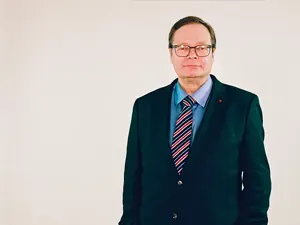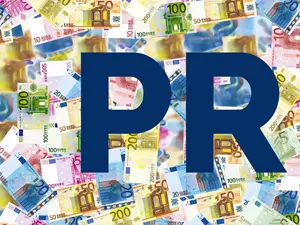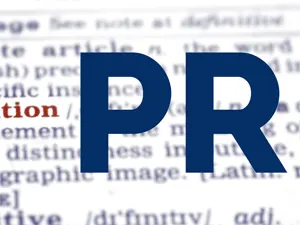
Broadcasting group will take over publishing house
It’s considered one of the biggest media amalgamations in Germany: RTL Television Group has now announced that it will buy a majority stake in Hamburg-based publisher Gruner + Jahr for €230 million. But is a TV broadcaster in a position to suddenly be a publisher too?
After months of negotiations, it has been announced that the RTL Deutschland broadcasting group will take over the Gruner + Jahr publishing house from January 1, 2022. Until now, they have both been subsidiaries of the Bertelsmann Group. As a result, brands such as Brigitte, Geo and Schöner Wohnen will now be transferred to RTL Group. Bertelsmann will only maintain a partial stake in Spiegel and the DDV Media Group.
The synergy effects from this are estimated at 100 million euros per year, three quarters of which are expected to come from additional growth and one quarter from savings. The decision was published almost simultaneously with RTL Group’s balance sheet announcement, which praised record results for the first half and raised the outlook for 2021.
Thomas Rabe, who has been chairman and CEO of Bertelsmann Group since 2012 and chief executive officer of RTL Group since 2019, seems enthusiastic about the deal: “It will create a journalistic powerhouse with the content expertise of more than 1,500 journalists.” And yet, despite this, the editor-in-chief principle is to be maintained “of course,” although the aim is to create a close partnership between the editorial teams.
But what exactly does it mean when what was once the largest publishing house in Europe is now taken over by a broadcasting group? What opportunities, but also challenges, does this create?
Taking on the media giants
Rabe spoke of the goal of a “national cross-media champion.” So far, the present looks different: G+J’s revenues have been declining for years. Whereas in 2010 it was still generating €2.2 million, by 2020 it was only about one-half that amount. Reasons for this include advertising and circulation losses, the ongoing digitization, and the sale of subsidiaries.
This merger is therefore intended to create a large network of different media formats, which in turn are to rise to become national ‘champions’. According to Rabe, in this way the national media are trying to keep up with the American media giants such as Netflix, Amazon & Co.
Image change
Looking at the image of the merger partners, it quickly becomes apparent that don’t have many overlaps. While RTL has so far tended to focus on easy-to-digest entertainment, Gruner + Jahr is a publisher of upscale magazines with higher journalistic and scientific standards.
But RTL now wants to change that and has also changed the presenters: Bohlen, Pocher and Co, who until now were almost representative of the channel, are no longer to be seen. Instead, Pinar Atalay and Jan Hofer from Tagesschau are now switching to a new RTL news format.
It’s probably just the beginning of a multitude of minor image changes. RTL has long planned to be known for more meaningful content in the future, bringing it closer to the public media in terms of content.
New projects
Many other changes are on the horizon: For one, the RTL streaming portal is to be pushed forward. For another, new programs with informative content are coming to RTL in the form of Stern Investigativ and RTL Aktuell. In addition, Geo offers the opportunity to provide the range of high-quality science formats on RTL. A first high-end documentary series is already planned for 2022. In this way, RTL Deutschland aims to establish itself as a leader of quality television, fill the streaming platform with content, and in turn invest further in projects.
Hamburg location
Rabe emphasized that G+J’s Hamburg location will be preserved and that the 2,500 employees will not have to relocate. Nevertheless, important decisions will probably no longer be made at Baumwall in Hamburg, but in Cologne or Luxembourg.
Likewise, a quarter of the synergy is to come from savings. The extent to which this relates to staff reductions remains unclear.
Intermeshing of business units
“Motion pictures and magazines are like fire and water – they don’t go together,” says former Stern deputy editor-in-chief Manfred Bissinger. But what really happens when motion picture media take over print media? When a TV station also becomes a publisher?
The concentration of influential media in a group can, in principle, be a great advantage. Everyone benefits from the individual editorial teams and can bundle the respective expertise to create something special.
But an excessive emphasis can also lead to a reduced diversity of opinion and topics. Presumably, they will address similar content in the future, but on different channels, including TV broadcast, podcast and print. As soon as cross-channel topics are specified, the respective editorial teams will have to adapt accordingly. Often, there is no more room for certain niches, from which magazines usually benefit greatly. This is a particular problem if the editorial teams are actually very different in their subject areas. Thus, in the worst-case scenario, the respective editorial teams and magazines could lose their individuality and then become replaceable in the eyes of the consumer.
Amazon and Netflix have also often been accused that their monopoly position in the market cannot be made up by smaller competitors alone, and that they therefore have to join forces. But Amazon is a brand with a clear corporate image. The same cannot be fully said of magazines such as Geo and Brigitte, together with RTL Deutschland.
Helmut Thoma, who was managing director of RTL for several years, also commented on the situation. He said that the company had already wanted to work more closely with G+J in the ’80s and ’90s, but it didn’t work out then, “You can’t unite these two worlds, print and TV. Creativity can’t just be shifted back and forth, and a magazine journalist doesn’t become a TV reporter overnight”. Creativity seems to be the key point here, because each medium has different ways of use, stylistic devices and functions that have to be adapted. For editorial teams that have only ever dealt with one specific medium, the switch can be fatal. Whether the merger of print and TV is now merely a negotiable obstacle or fundamentally incompatible, only time can ultimately tell.




0 Comments